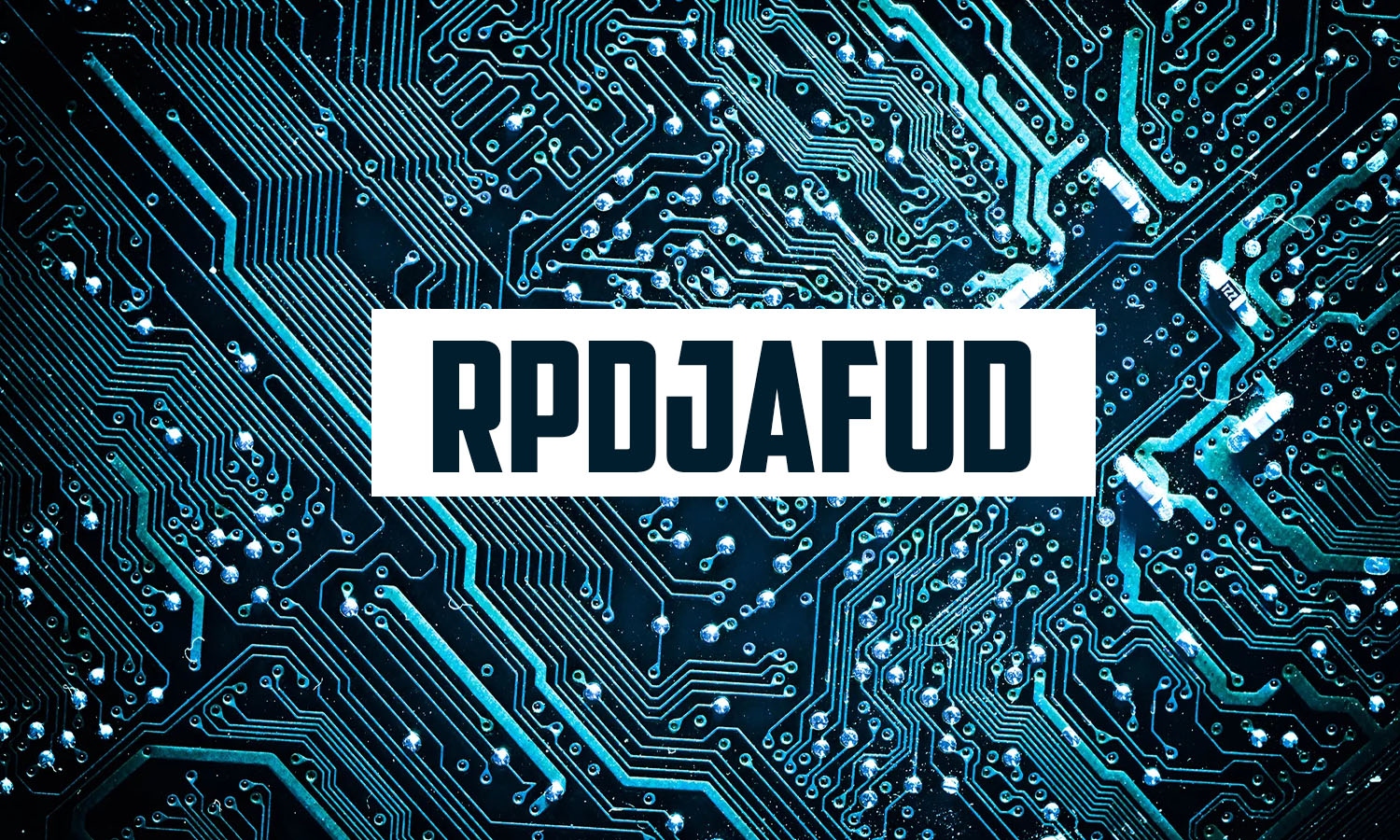Celebrity
The Ultimate Guide to RPDJAFUD: Understanding the Future of Cybersecurity and Automation

In today’s digital landscape, cybersecurity and automation are no longer just buzzwords but essential components of a secure and efficient system. One emerging concept that is beginning to gain attention is RPDJAFUD. Although it’s still an evolving term, it promises to redefine how we approach security, efficiency, and automation in our digital environments. This guide will explore what RPDJAFUD is, its key features, benefits, applications, challenges, and how it is poised to change the digital world.
What is RPDJAFUD?
RPDJAFUD is a framework that integrates artificial intelligence (AI), cybersecurity, and automation to create a more secure, efficient, and adaptive digital ecosystem. While the term itself is not widely recognized yet, the principles behind RPDJAFUD are already being explored in several industries. This framework aims to provide cutting-edge solutions for combating cyber threats while streamlining operational processes through automation and advanced technologies.
Though RPDJAFUD remains in the conceptual stage, its potential impact on sectors such as finance, healthcare, and e-commerce could be revolutionary. The key to RPDJAFUD lies in its ability to use AI-driven security protocols, predict threats before they happen, and automate numerous processes that would traditionally require human intervention.
Key Features and Benefits of RPDJAFUD
AI-Driven Cybersecurity
One of the standout features of RPDJAFUD is its emphasis on AI-powered cybersecurity. This component leverages machine learning algorithms to identify potential threats before they manifest. Instead of relying on traditional security methods that react after a breach, RPDJAFUD proactively detects vulnerabilities, reducing the likelihood of a security breach.
- Predictive Threat Detection: By analyzing patterns and identifying unusual activities, AI can flag potential cyberattacks in real-time.
- Autonomous Security Measures: In the event of a threat, the system can automatically initiate defense mechanisms without requiring human intervention, thereby minimizing response time.
Advanced Encryption Techniques
Encryption plays a crucial role in safeguarding sensitive data, and RPDJAFUD takes this to the next level. Using quantum-proof encryption methods, RPDJAFUD aims to protect data from even the most advanced hacking techniques.
- Multi-Layer Firewalls: These firewalls provide multiple levels of defense, ensuring that even if one layer is breached, the others will prevent further access.
- Adaptive Authentication: This feature ensures that only authorized individuals can access sensitive data by adapting to the user’s behavior, reducing the risk of unauthorized access.
Automation and Efficiency
RPDJAFUD’s ability to automate various processes significantly enhances operational efficiency. Traditional systems require human oversight and decision-making, but with automation, RPDJAFUD can streamline repetitive tasks, reduce human error, and increase productivity.
- Reduced Human Intervention: Automation in cybersecurity and data management minimizes the chances of mistakes made by human operators.
- Faster Response Times: With AI working autonomously, responses to security threats and system failures happen in real-time, ensuring minimal downtime.
Scalability and Adaptability
As industries continue to evolve, so do the technologies that support them. RPDJAFUD is designed to be scalable, meaning it can grow and adapt to the changing needs of different sectors. Whether in finance, healthcare, or e-commerce, RPDJAFUD can be tailored to meet the unique security and automation requirements of each field.
Applications of RPDJAFUD Across Industries

Finance
The financial sector is one of the most sensitive industries when it comes to data security. With vast amounts of personal and financial data at stake, any breach can have catastrophic consequences. RPDJAFUD enhances security by detecting fraudulent transactions, protecting sensitive customer information, and ensuring compliance with financial regulations.
- Fraud Prevention: AI can detect patterns in transaction data, helping financial institutions identify and stop fraudulent activities before they escalate.
- Data Protection: By using advanced encryption methods, RPDJAFUD ensures that customer data is secure, even in the event of a cyberattack.
Healthcare
In healthcare, patient data confidentiality is paramount. RPDJAFUD helps healthcare providers protect medical records, maintain HIPAA compliance, and improve patient care through automation.
- Patient Data Protection: AI-driven security protocols safeguard personal health information, reducing the risk of breaches.
- Regulatory Compliance: RPDJAFUD can automate the process of ensuring that healthcare systems comply with ever-changing regulations, such as HIPAA in the United States.
E-Commerce
E-commerce platforms handle sensitive customer information daily. From credit card details to personal addresses, the need for robust cybersecurity is critical. RPDJAFUD helps secure e-commerce platforms, ensuring that transactions are safe and customer data is protected.
- Payment Security: RPDJAFUD ensures that all online transactions are encrypted and protected against fraud.
- Customer Trust: By securing customer data, businesses can build trust and confidence, encouraging more customers to make purchases.
Challenges and Considerations
While RPDJAFUD holds great promise, there are several challenges that organizations must consider before implementing it.
Integration Complexity
Integrating RPDJAFUD into existing systems can be complex. Organizations must assess their current infrastructure to determine how RPDJAFUD can fit into their existing security and operational protocols. The technology may require significant modifications to ensure compatibility.
Resource Requirements
Implementing RPDJAFUD can be resource-intensive. It may require upgrades to existing hardware, additional training for staff, and investment in AI and automation tools. Organizations must carefully weigh the costs and benefits of adopting this framework.
Evolving Standards
As technology evolves, RPDJAFUD will need to adapt to new threats and changing market conditions. The framework must remain flexible and continually update its security measures to stay ahead of emerging threats. This requires continuous investment in research and development.
Conclusion

RPDJAFUD is an exciting, emerging framework that combines AI, cybersecurity, and automation to provide enhanced digital security and operational efficiency. By proactively identifying and mitigating threats, automating processes, and offering scalable solutions across industries, RPDJAFUD is poised to revolutionize the way businesses approach cybersecurity and digital operations.
While challenges such as integration complexity and resource requirements exist, the potential benefits of RPDJAFUD cannot be overlooked. As organizations continue to face increasingly sophisticated cyber threats, RPDJAFUD offers a promising solution to create more secure, efficient, and resilient digital ecosystems.
Frequently Asked Questions (FAQs)
- What does RPDJAFUD stand for?
- RPDJAFUD is an emerging framework that integrates AI, cybersecurity, and automation to enhance digital security and operational efficiency.
- How does RPDJAFUD enhance cybersecurity?
- RPDJAFUD uses AI to detect potential threats before they happen and automate security measures, reducing the risk of breaches.
- What industries can benefit from RPDJAFUD?
- RPDJAFUD can benefit industries like finance, healthcare, and e-commerce by improving data protection, fraud prevention, and regulatory compliance.
- What are the key features of RPDJAFUD?
- Key features include AI-driven cybersecurity, advanced encryption techniques, automation, and scalability.
- Is RPDJAFUD scalable?
- Yes, RPDJAFUD is designed to scale with industries as their security and operational needs evolve.
- How does RPDJAFUD use encryption to secure data?
- RPDJAFUD uses quantum-proof encryption and multi-layer firewalls to protect sensitive data from potential cyberattacks.
- What are the challenges of implementing RPDJAFUD?
- Challenges include integration complexity, resource requirements, and the need for continuous adaptation to emerging technologies.
- Can RPDJAFUD prevent fraud in financial transactions?
- Yes, RPDJAFUD can analyze transaction patterns and identify fraudulent activities in real-time.
- How does RPDJAFUD benefit healthcare organizations?
- RPDJAFUD helps protect patient data, ensure compliance with regulations like HIPAA, and streamline healthcare operations through automation.
- Is RPDJAFUD ready for widespread adoption?
- While RPDJAFUD is still in its conceptual phase, it holds significant potential for future implementation in various industries.
Click for more amazing info. News MM

-

 Celebrity4 months ago
Celebrity4 months agoIndia Rose Brittenham: All You Need to Know About Heather Thomas’ Daughter
-

 Celebrity4 months ago
Celebrity4 months agoNadia Farmiga? All You Need to Know About Taissa Farmiga’s Sister
-

 Celebrity4 months ago
Celebrity4 months agoMargot Rooker: All You Need to Know About Michael Rooker’s Wife
-

 Celebrity4 months ago
Celebrity4 months agoRobert Noah? All You Need to Know About Trevor Noah’s Father
-

 Celebrity4 months ago
Celebrity4 months agoVerna Aho? All You Need to Know About Lauri Markkanen’s Wife
-

 Celebrity3 months ago
Celebrity3 months agoWho Is Itchko Ezratti’s Wife? Anna Ezratti Supporting Her Husband’s Legacy
-

 Celebrity4 months ago
Celebrity4 months agoJackie Witte? All You Need to Know About Paul Newman’s First Wife
-

 Celebrity4 months ago
Celebrity4 months agoCheryl Pistono? All You Need to Know About Kareem Abdul-Jabbar’s Ex-Girlfriend












